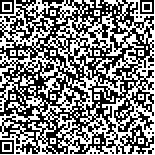下载中心
优秀审稿专家
优秀论文
相关链接
摘要

双层能量平衡模型TSEB(Two Source Energy Balance)常用于地表蒸散发的估算研究,对于干旱半干旱流域的水资源调控以及利用有着十分重要的意义。本文在流域尺度上分别利用Sentinel-3双角度观测热红外和近红外数据反演的地表温度LST(Land Surfacer Temperature)和地表组分温度LSCT(Land Surface Component Temperatures)分别驱动TSEB模型,估算了黑河流域不同土地覆盖类型下的瞬时地表通量,并利用流域内上、中、下游通量塔地面观测数据验证了两种模型估算的地表通量。结果表明:两种模型都在一定程度上高估了净辐射和潜热通量,在植被稀疏的高寒草甸以及河岸林土地覆被类型下,TSEB-PT模型表现更好,随着植被覆盖度的上升,TSEB-2T模型的优势更加明显。研究结果为黑河流域水资源合理利用提供一定的保障以及为水资源管理者提供流域尺度上更加准确的植被水分利用的估计值,并且为后期模型的优化提供了理论基础。
The Two-Source Energy Balance (TSEB) model is often used in the estimation of surface evapotranspiration which is important for the water resources regulation and utilization especially in arid and semi-arid areas. Using the different model inputs, such as land surface temperature and surface component temperatures (soil and vegetation) which are the key boundary of the TSEB model can vary the model performance in the prediction of evapotranspiration. In this paper, the Land Surface Temperature (LST) at nadir angle and Land Surface Component Temperatures (LSCT) retrieved from dual-angle observations of Sentinel-3 were used to drive the TSEB model in Heihe River Basin. At each site, the ground measurements data including net radiation, soil heat flux, sensible and latent heat fluxes were measured by radiometer, heat-plates, eddy covariance, respectively, and with the representativeness ranges from meters to hundreds of meters. The energy balance closure was enforced in the EC system observations using the Bowen ratio approach. What’s more, the large aperture scintillometers were used to measure the sensible heat flux over several kilometers areas to partly solve the mismatch between the model’s output and ground measurement.Then, the outputs including net radiation, soil heat flux, sensible and latent heat fluxes are evaluated using the ground measurements from EC and LAS which have larger source areas over the grassland, cropland and riparian forest landcover types in the Heihe River Basin, respectively. The results showed that both models overestimate the net radiation and latent heat flux with values of mean bias range from 50 to 150 W/m2 and from 60 to 130 W/m2 when compared with the ground measurements. However, the model performances of the TSEB-PT and TSEB-2T varied over different landcover types. In order to further explore the overestimation in latent heat flux from the two models, we intercompared the spatial pattern of plant transpiration estimated by the two models along with the moderate-resolution imaging spectroradiometer (MODIS) leaf area index data and the canopy temperature separated by the two models. It informed that the difference of model separated component temperatures mainly lead to the difference outputs of latent heat fluxes between TSEB-PT model and TSEB-2T model. Additionally, the TSEB-PT model mainly overestimated the canopy transpiration especially over the areas with high vegetation fraction coverage in the upstream of Heihe River Basin. This may due to the canopy temperature separated by the TSEB-PT model have lower values when compared with the inputs of canopy temperature in the TSEB-2T model. The lower canopy temperature could lead to lower sensible heat flux values and result in higher latent heat flux which is calculated as a residual in the land surface energy balance equation.The results showed that the TSEB-PT model has a better performance in the areas with low vegetation fraction coverage such as alpine meadows and riparian forest land cover types. However, the TSEB-2T model performed better in the areas with high vegetation fraction coverage, such as farmland, forest and so on. What’s more, as the fraction of vegetation coverage increase, the advantages of the TSEB-2T model are more obvious. The research results can provide water resources managers with more accurate estimates of land surface water consume over difference ecosystem.

